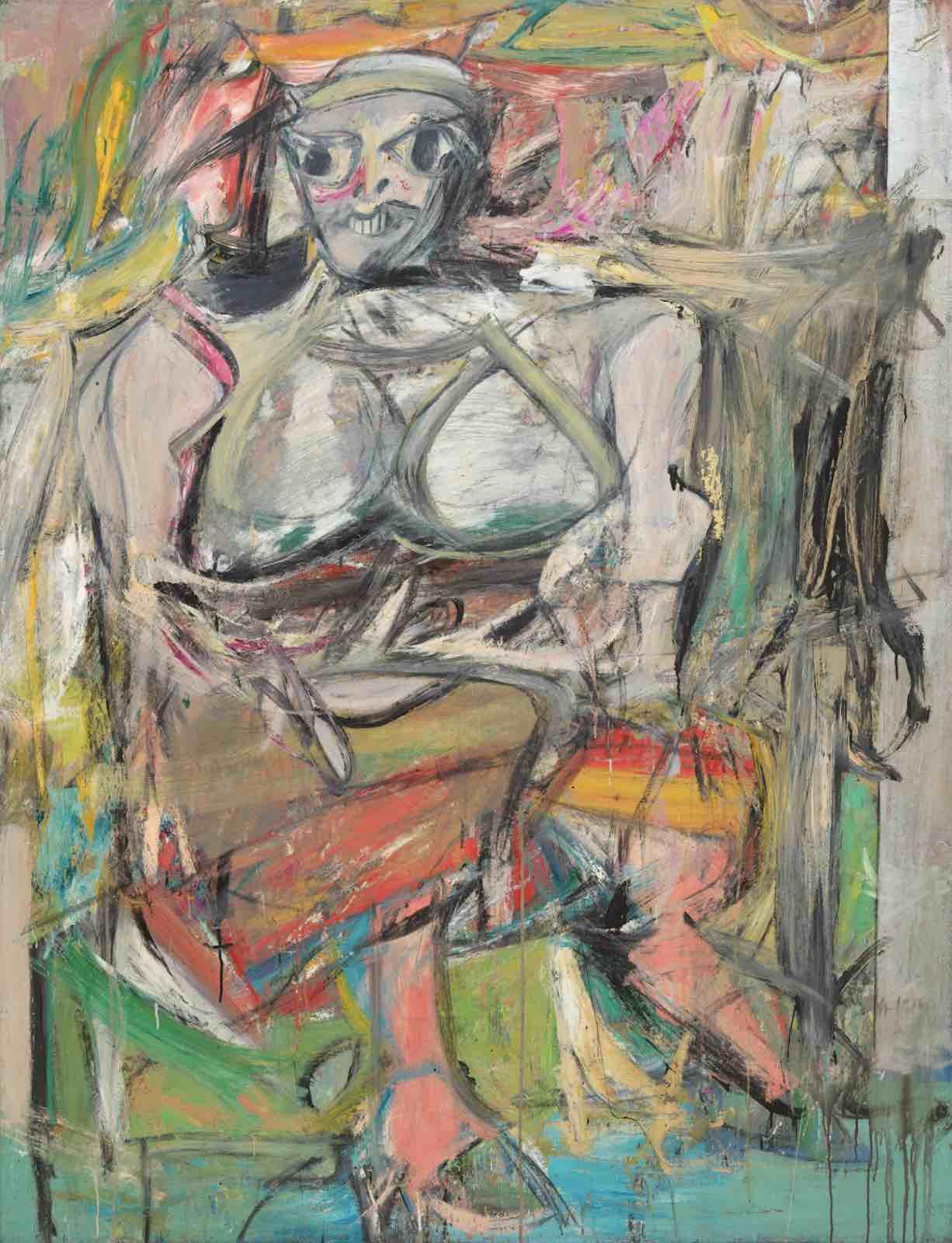Art historian Robert C. Hobbs asserts that Abstract Expressionism was directly influenced by Surrealism. In the 1940s during WWII, Abstract Expressionists used emotion, unconventional techniques such as dripping and throwing paint, and automatic and spontaneous movement inspired by the subconscious to create this new style of Modernism.
Surrealism and Abstract Expressionism both depict the visual subconscious, therefore Hobbs argues that they are bound to be stylistically similar. Hobbs claims that Surrealism had more structure to it, with a clear order of subject, compared to Abstract Expressionism’s romantic nature. Each artist’s work is subjective and not mimicked by others within the style.
Other scholars argue that Cubism served as the precursor for Abstract Expressionism: An arguable influence from Les Demoiselles d'Avignon by Pablo Picasso (1881-1973) can be seen in Woman I by Willem de Kooning (1904-1997) due to both paintings’ use of primitivism for the female form. Where Surrealism focused more on creating dreamscapes, Abstract Expressionists used psychic automatism to form shapes and create art.






























